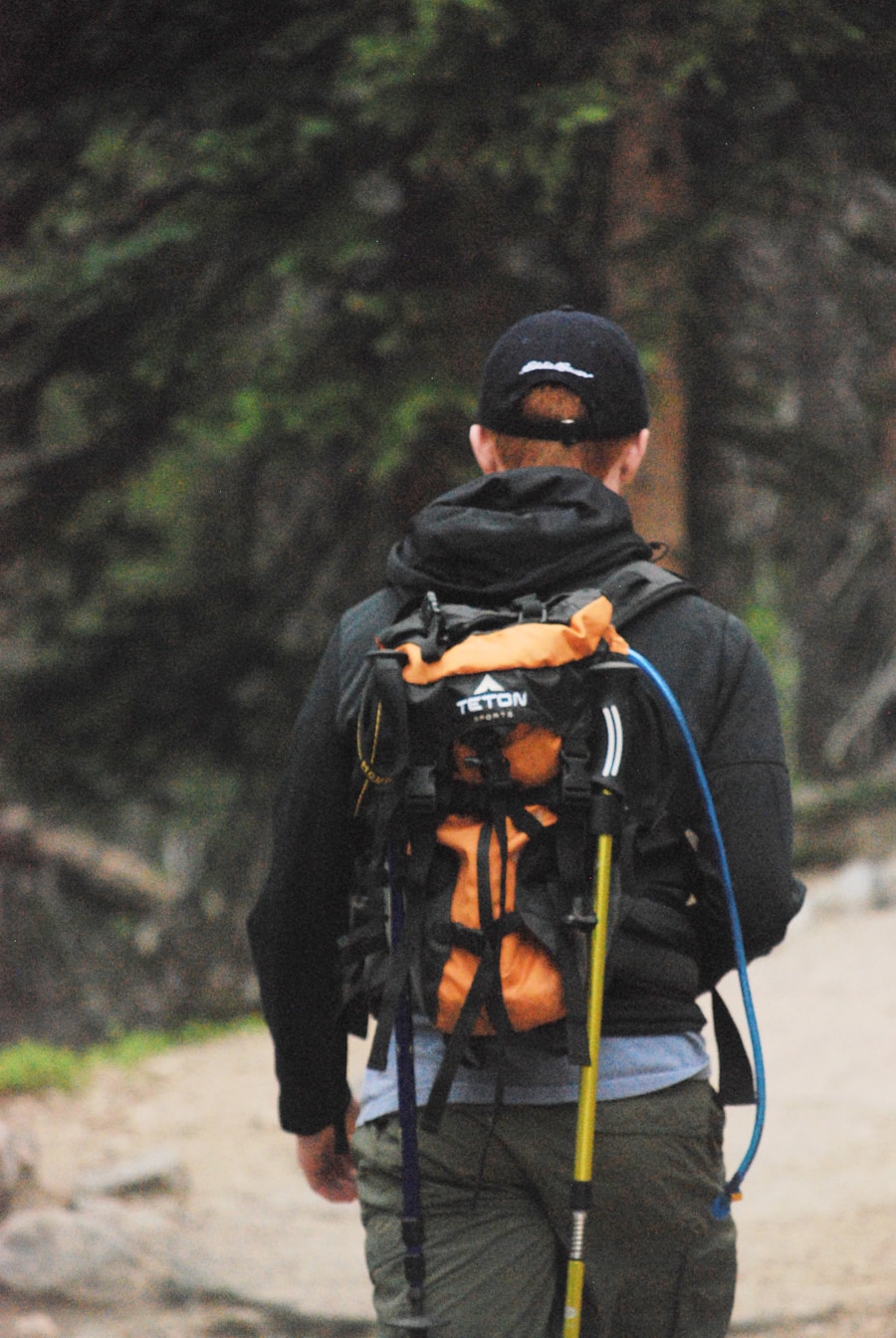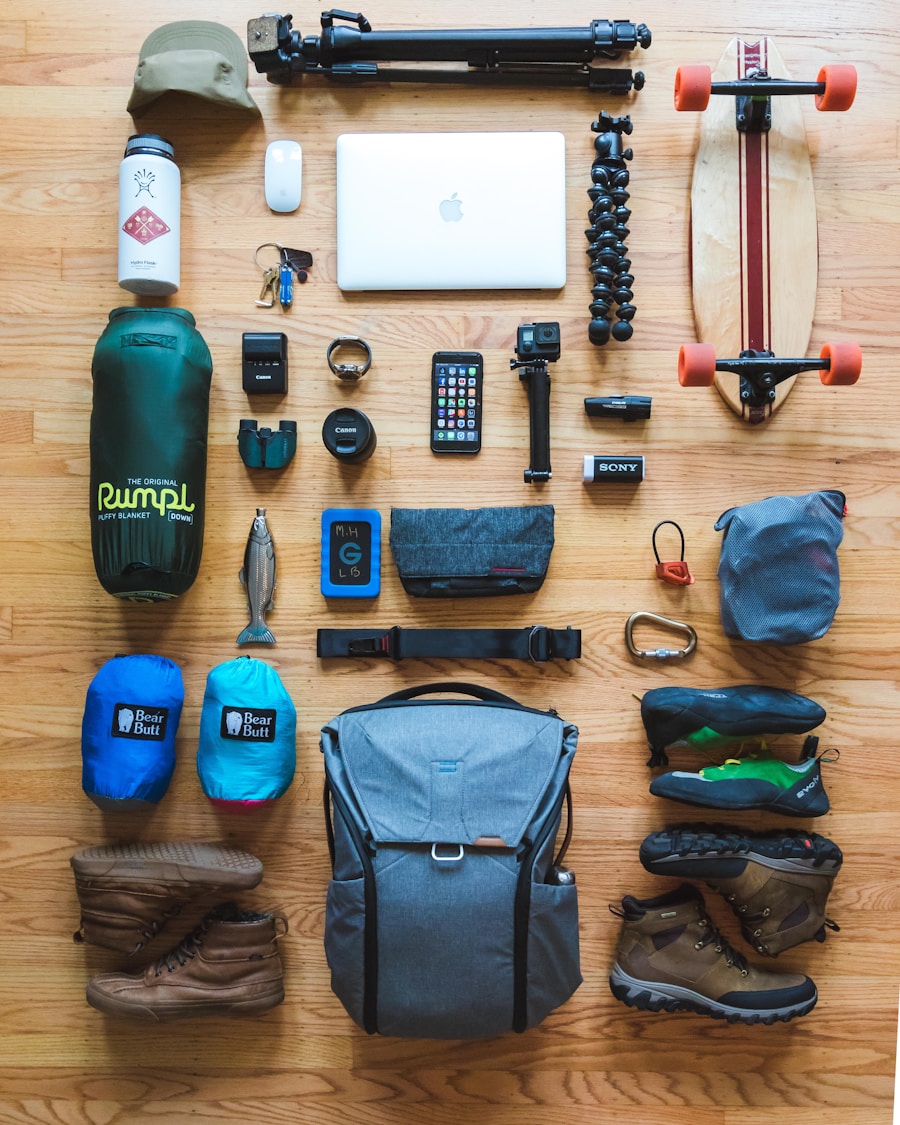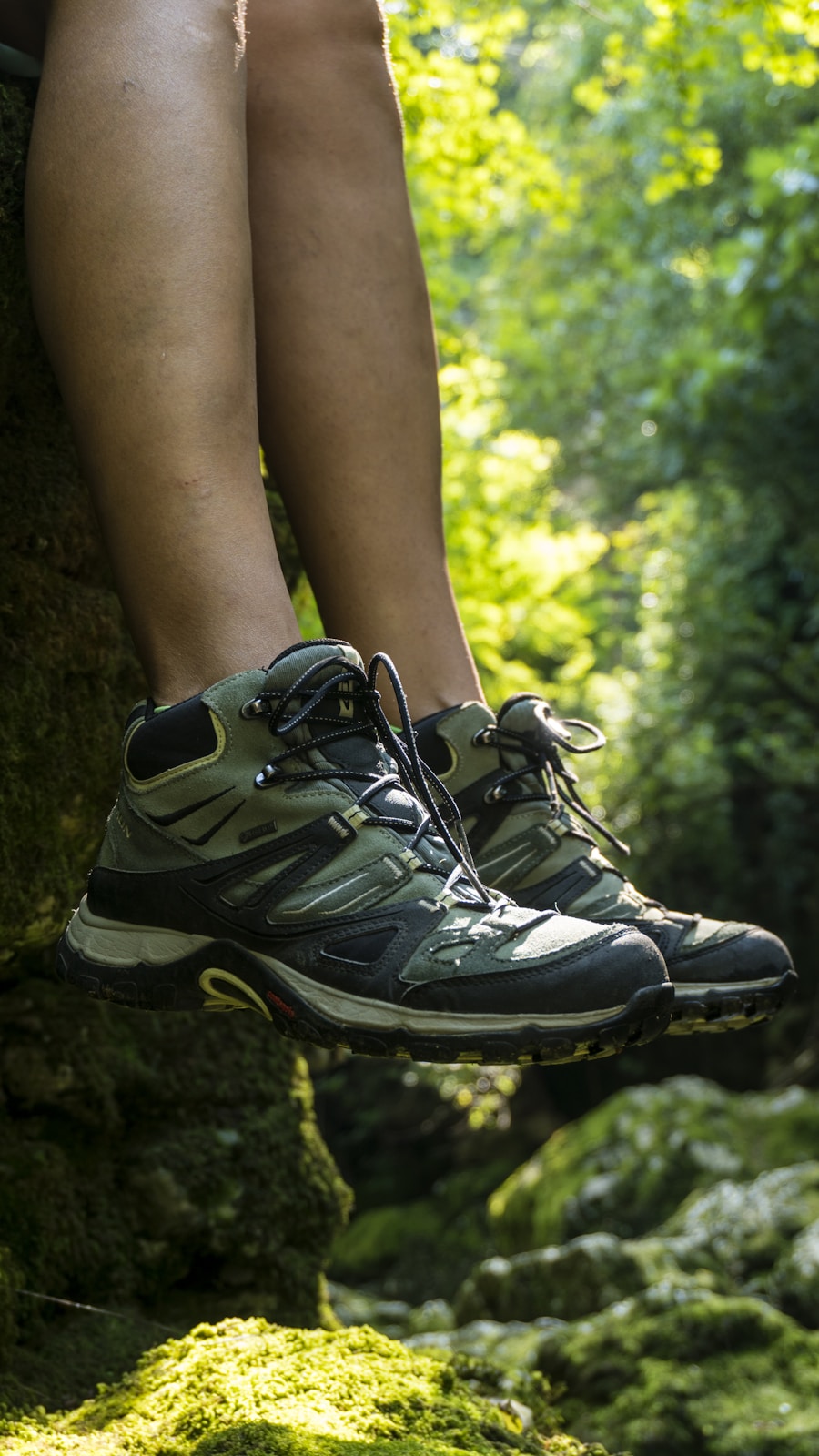Hiking is a popular outdoor activity that involves walking in natural environments, often on trails or paths. It can range from leisurely strolls in local parks to challenging treks in rugged wilderness areas. The appeal of hiking lies in its ability to connect individuals with nature, offering a respite from the hustle and bustle of daily life.
It is an activity that can be enjoyed alone or with friends and family, making it a versatile option for recreation. The experience of hiking can vary significantly based on the terrain, weather conditions, and the hiker’s level of experience. At its core, hiking is not just about the physical act of walking; it encompasses a deeper appreciation for the environment and the ecosystems that hikers traverse.
Many people find that hiking allows them to engage with their surroundings in a way that is both invigorating and calming. The sights, sounds, and smells of nature can have a profound impact on mental well-being, reducing stress and promoting mindfulness. Understanding the basics of hiking involves recognizing these benefits while also being aware of the challenges that may arise during outdoor excursions.
Key Takeaways
- Hiking is a form of outdoor physical activity that involves walking on trails or paths in natural environments.
- Proper gear and clothing selection is crucial for a safe and enjoyable hiking experience, including sturdy footwear, weather-appropriate clothing, and essential supplies.
- When planning a hike, it’s important to consider factors such as trail difficulty, distance, elevation gain, and weather conditions.
- Safety tips for hiking include staying hydrated, being aware of wildlife, carrying a first aid kit, and informing others of your hiking plans.
- Building physical endurance and strength through regular exercise and training can help prepare hikers for longer and more challenging trails.
Selecting the Right Gear and Clothing
Choosing the appropriate gear and clothing is crucial for a successful hiking experience. The right equipment can enhance comfort, safety, and overall enjoyment on the trail. Footwear is perhaps the most critical component; sturdy hiking boots or shoes provide support and traction on various terrains.
When selecting footwear, it is essential to consider factors such as fit, breathability, and waterproofing. A well-fitted boot can prevent blisters and discomfort, allowing hikers to focus on the journey rather than their feet. In addition to footwear, clothing should be chosen based on the weather conditions and the intensity of the hike.
Layering is a key strategy for managing temperature fluctuations; wearing moisture-wicking base layers, insulating mid-layers, and waterproof outer layers can help regulate body heat and keep hikers dry. Accessories such as hats, gloves, and sunglasses are also important for protection against sun exposure and cold weather. Furthermore, carrying a well-stocked backpack with essentials like water, snacks, a first-aid kit, and navigation tools ensures that hikers are prepared for unexpected situations.
Planning Your Hike: Choosing the Right Trail

Selecting the right trail is a fundamental aspect of planning a hike. Factors such as difficulty level, distance, elevation gain, and scenic value should all be considered when choosing a route. Beginners may prefer shorter, well-marked trails with gentle inclines, while more experienced hikers might seek out challenging paths that offer breathtaking views or unique geological features.
Researching trails through guidebooks, online resources, or local hiking clubs can provide valuable insights into what to expect. In addition to physical considerations, it is essential to take into account the time of year and weather conditions when planning a hike. Some trails may be inaccessible during certain seasons due to snow or flooding, while others may be particularly beautiful during specific times of the year when wildflowers bloom or foliage changes color.
Understanding local wildlife patterns can also enhance the hiking experience; for instance, knowing when animals are most active can lead to exciting encounters in their natural habitats.
Safety Tips and Precautions
| Safety Tips and Precautions | Statistics |
|---|---|
| Wearing Seatbelts | Seatbelts reduce the risk of death by 45% and cut the risk of serious injury by 50% |
| Fire Safety | Over 1.3 million fires were reported in the United States in 2020, resulting in 3,600 deaths and 16,600 injuries |
| Workplace Safety | 5,333 workers died on the job in the United States in 2019, with the leading causes being falls, struck by object, electrocution, and caught-in/between |
| Home Safety | Unintentional injuries at home resulted in 39.5 million medical visits and 126,000 deaths in the United States in 2019 |
Safety should always be a top priority when hiking. One of the most important precautions is to inform someone about your hiking plans before heading out. This includes sharing details about your intended route, estimated return time, and any emergency contacts.
In case of an unexpected situation, having someone aware of your whereabouts can be crucial for rescue efforts. Additionally, hikers should familiarize themselves with basic first-aid skills and carry a well-equipped first-aid kit. Common injuries such as sprains, cuts, or insect bites can occur on the trail, and knowing how to address these issues can make a significant difference in an emergency.
It is also wise to carry a map and compass or a GPS device to avoid getting lost. Understanding how to read trail markers and navigate using these tools can help maintain orientation in unfamiliar areas.
Building Physical Endurance and Strength
Hiking can be physically demanding, especially on challenging trails with steep inclines or rugged terrain. Building physical endurance and strength is essential for enjoying longer hikes without excessive fatigue. A well-rounded fitness regimen that includes cardiovascular exercises, strength training, and flexibility work can prepare individuals for the demands of hiking.
Cardiovascular activities such as running, cycling, or swimming improve overall stamina and heart health. Incorporating strength training exercises that target the legs, core, and upper body can enhance stability and power during hikes. Exercises like squats, lunges, and planks are particularly beneficial for developing the muscles used in climbing hills and navigating uneven surfaces.
Additionally, practicing balance through activities like yoga or tai chi can improve coordination on the trail.
Navigation and Orientation Skills

Navigating through diverse landscapes requires a solid understanding of navigation skills. While many trails are well-marked with signs and blazes, there are instances where hikers may need to rely on maps or GPS devices to find their way. Familiarizing oneself with topographic maps is an invaluable skill; these maps provide detailed information about elevation changes, terrain features, and landmarks that can aid in navigation.
In addition to map reading, understanding how to use a compass is essential for orientation in remote areas where technology may fail due to lack of signal or battery life. Learning how to take bearings and triangulate positions using natural landmarks can enhance confidence in navigating unfamiliar territory. Practicing these skills in safe environments before embarking on longer hikes can help solidify knowledge and build competence.
Leave No Trace Principles
The Leave No Trace principles are fundamental guidelines designed to minimize human impact on natural environments while enjoying outdoor activities like hiking. These principles emphasize responsible behavior that protects ecosystems and preserves the beauty of nature for future generations. One key principle is to plan ahead and prepare; this includes researching trails, understanding regulations, and packing out all trash.
Another important aspect is respecting wildlife by observing animals from a distance without disturbing their habitats. Hikers should also stay on designated trails to prevent soil erosion and protect native vegetation. Campfires should be built only in designated areas or avoided altogether in sensitive environments; using a portable stove for cooking minimizes fire impact on the landscape.
By adhering to these principles, hikers contribute to conservation efforts while enjoying their outdoor experiences.
Enjoying the Benefits of Hiking
The benefits of hiking extend far beyond physical fitness; they encompass mental health improvements, social connections, and a deeper appreciation for nature. Engaging with the outdoors has been shown to reduce stress levels significantly while enhancing mood and cognitive function. The rhythmic motion of walking combined with fresh air stimulates endorphin production, leading to feelings of happiness and relaxation.
Moreover, hiking provides an opportunity for social interaction and bonding with friends or family members. Sharing experiences on the trail fosters connections that can strengthen relationships while creating lasting memories. Whether it’s conquering a challenging summit together or simply enjoying a scenic view at a rest stop, these shared moments contribute to personal fulfillment.
In addition to individual benefits, hiking promotes environmental stewardship by encouraging people to connect with nature and understand its value. As individuals immerse themselves in natural settings, they often develop a sense of responsibility toward preserving these spaces for future generations. This connection fosters advocacy for conservation efforts and sustainable practices that protect our planet’s ecosystems.
Through understanding the basics of hiking, selecting appropriate gear, planning effectively, prioritizing safety, building physical endurance, mastering navigation skills, adhering to Leave No Trace principles, and embracing the myriad benefits of this activity, individuals can cultivate a rewarding relationship with nature that enriches their lives in countless ways.
If you’re looking to start hiking, you may want to check out this article on 5 Must-Have Packing Cubes for Your Spring 2025 Getaway. Having the right gear and organization tools can make your hiking experience much more enjoyable and efficient. These packing cubes will help you stay organized and prepared for your outdoor adventures.
Love travel? Join Our Facebook Community For More Tips.
FAQs
What is hiking?
Hiking is a recreational activity that involves walking on trails or paths in natural environments such as forests, mountains, and countryside.
Why should I start hiking?
Hiking is a great way to stay active, connect with nature, and reduce stress. It also offers the opportunity to explore new places and enjoy beautiful scenery.
How do I prepare for a hike?
Before starting a hike, it’s important to research the trail, check the weather forecast, pack essential items such as water, snacks, and a first aid kit, and wear appropriate clothing and footwear.
What are some beginner-friendly hiking trails?
Beginner-friendly hiking trails are typically well-marked, have moderate elevation gain, and are of a shorter distance. Look for trails in local parks, nature reserves, or beginner-friendly hiking areas.
What are some safety tips for hiking?
Some safety tips for hiking include informing someone of your hiking plans, staying on marked trails, being aware of wildlife, bringing a map and compass, and knowing your limits.
How can I improve my hiking skills?
Improving hiking skills can be done by gradually increasing the difficulty of trails, learning navigation and map reading, practicing proper hiking techniques, and joining hiking groups or clubs.
